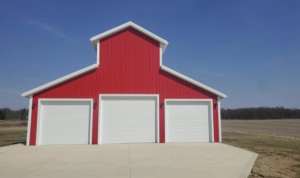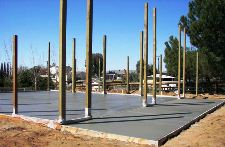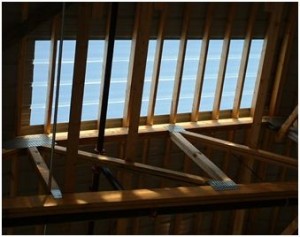Avoiding Being Driven Crazy With Barndominium Questions Part I
Loyal reader and client GREG in KENTWOOD is planning his new post frame barndominium home and has questions no one else will answer. Mike’s answers are in italics.
Mike,
Good morning, I hope all is well with you.
I have some questions that I would like to understand and it is driving me crazy, because no one other than Hansen Pole Building, it seems will answer my questions and return my calls. Most the crazy part is about the slab. I find cement workers are not great communicators. I am 56, a mechanical engineer, have renovated several houses from the studs up, I can do plumbing without butt crack showing, I raced stock cars for 10 years, I tell you this, because I know how to build stuff and am not afraid of hard work. My job requires a detailed list of Bill of Materials, precision drills and reamers and very detailed processes to make fuel injection parts, ABS brake parts and other. I hope you can help out, as I am ignorant about some simple facts that are driving me crazy.
Mike: We believe good communication is essential to successful completion of most any building. You will find we strive towards written communications in order to minimize (or eliminate) possible miscommunication of important facts and details).
I also would like to say Brenner is doing a fine job.
Mike: Brenner has a passion for post frame buildings and he is not at all afraid to reach out to higher authorities for answers to complex structural questions.
Due to your great level of communication, you so far are my #1 choice to partner with on my new house. I also would be willing to visit you in MN if you have/think I could see examples of my questions first hand.
Statements from details I learned at Code Meeting:
- In Michigan, in my county I need to have a 2’ foam, below grade, with R10 barrier, around the full foundation or slab perimeter.
- So my building code staff recommends a Rat Wall 2’ below grade, or a crawl space with footers, or a slab with a wooden wall built to hold the 2’ foam below grade.
- I don’t really have a problem with the Rat Wall, but it certainly will add more cost to cement.
 My questions on this topic are:
My questions on this topic are:
-
- If using a Rat Wall, it seems like the 6” * 6” poles will then be encapsulated in cement for about 2.5’ at minimum. I thought the poles were not supposed to be in cement as it causes probably more decay than dirt.
Mike: Concrete does not cause premature decay of properly pressure preservative treated columns. - What are your thoughts?
Mike: Personally I would build over a crawl space because my knees are far happier living on wood than concrete. - What would you recommend for the 2’ below grade issue regarding the slab foundation? Mike: With a slab on grade, you can use rigid perimeter insulation without a need for a ‘rat wall’ or wood foundation wall. It can be held in place by backfill on each side. It can be placed running from below base trim on exterior of splash plank, or on inside of splash plank. If on inside of splash plank, it eliminates having to protect it from possible UV degradation.
- If using a Rat Wall, it seems like the 6” * 6” poles will then be encapsulated in cement for about 2.5’ at minimum. I thought the poles were not supposed to be in cement as it causes probably more decay than dirt.
On attachment pictures in the middle pages show where the 6” X 6” poles go and spacing, listed are my questions:
I am concerned with spacing of 12’ and 14’ of the 6” X 6” posts. (I’m sure the loading is OK, within code, but see below)
Mike: Actually with your 21 foot eave height and Exposure C for wind 6×6 columns will not engineer out. Your building will have glulaminated columns manufactured out of high strength 2×6 or 2×8 depending upon location.
-
- One concern is getting wood in today’s supply chain that are straight enough for the girt boards and purlins at 12’ and 14’, should I be concerned? ( I can’t get straight 2” X 4” at 8’ for the walls I have built in last year alone.) Mike: Lumber is obviously organic and we can no longer cut down those old growth trees where one might be able to get straight grained, narrow growth ringed lumber with few or no defects and very little warp, twist or cup. One beauty of steel roofing and siding is it hides a plethora of framing imperfections (like warp), due to high ribs of steel siding.
When using double trusses, at all locations, why not just go to 8’ centers on the poles? I know it is more 6” X 6” poles, but really is not anymore trusses and may help get straighter girt and purlin boards.
Mike: Wider spaced columns allow for more flexibility in location of doors and windows and an added advantage of not having to dig as many holes. If you were thinking of using a single truss every eight feet, rather than a double truss every 12, I would discourage it. Double trusses allow for true load sharing and eliminate any possibility of a single truss having a weak point, where under extreme loads (beyond design loads) it may fail and bring down your entire roof.
Come back tomorrow for Part II in Barndominium Questions!









